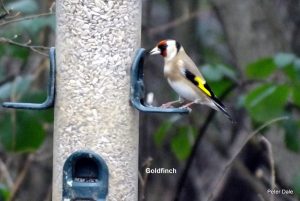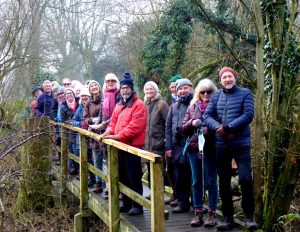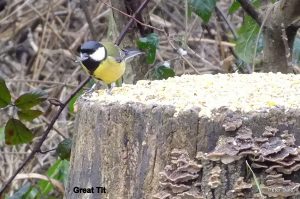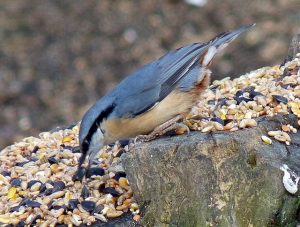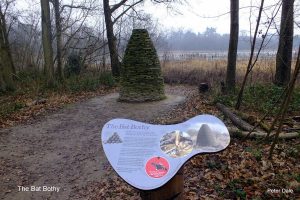As an RSPB Project Manager by day and Wildlife Gardener in his spare time, Adrian Thomas has always been aware of Birdsong as the natural soundtrack to our lives. It can evoke an emotional and powerful sense of time, place and season and it is not just a highly accurate way to identify and find many birds, but also a great source of joy to many nature lovers.
Adrian opened the Group’s first meeting of 2022. He is the first to acknowledge that identifying which bird is making which sound can seem a challenge, and he is keen for us to explore ways that we can learn to train our ears to get to grips with this.
Over time Adrian has made recordings of bird sounds from all over the UK and was dismayed at the constant background of ‘sound litter’ – planes, motor bikes, farm generators and sheep, to name but a few.
He explained that as we have few adjectives to describe sound a sonogram can help us learn to identify songs by ear by showing how the frequency (pitch) goes up and down, as well as the length of notes. He encouraged members to appreciate not only the beautiful song like sounds of a bird attempting to attract a mate, but also the more intriguing sounds; such as the difference between a bird attempting to defend a territory – also to distinguish between different species.
With a further feather in his cap (please excuse the pun!) Adrian helped to create the RSPB music single entitled ‘Let Nature Sing’ which was released in 2019. It proved extremely popular and reached number 18 in the charts and was given regular airtime on Radio 2.
Tricia Hall took to the floor after the customary break for refreshments and reported that Water Rails had been spotted on the Rife as well as two Little Egrets. Also Cattle Egrets had been breeding at Pagham Harbour. Tricia reminded members to count the birds that visited their gardens for the period of one hour over the coming weekend and to record their findings on the RSPB’s Big Garden Birdwatch website. The results would contribute to this important nationwide survey and is an important indicator as to the state of our key breeding and non-breeding bird populations.
To conclude the meeting Ed Miller advised members that the Public Enquiry into the Persimmon planning application at the Chatsmore Farm site on the North Goring Gap had now closed but he warned that the Inspector’s decision could take some weeks or possibly months.

